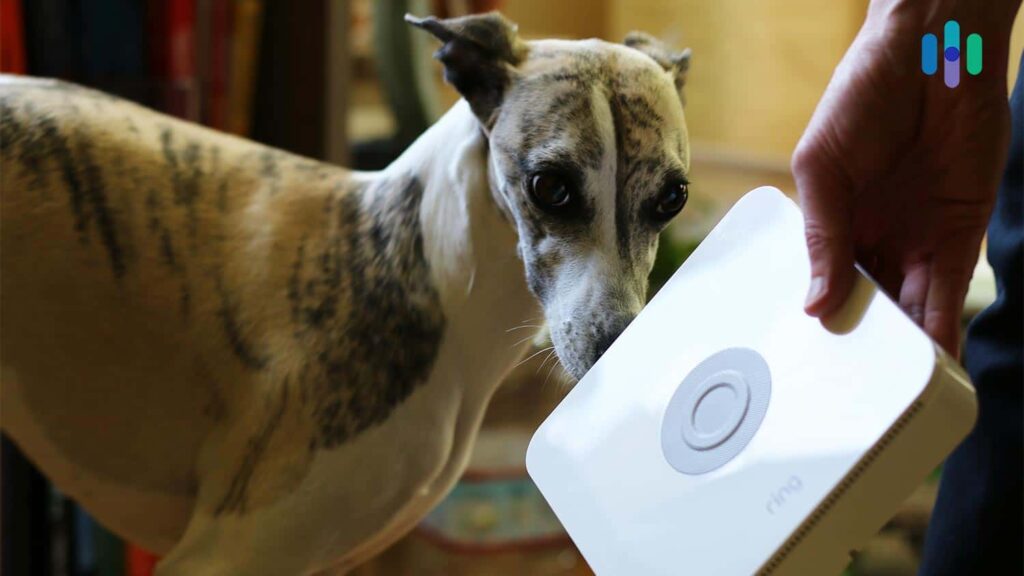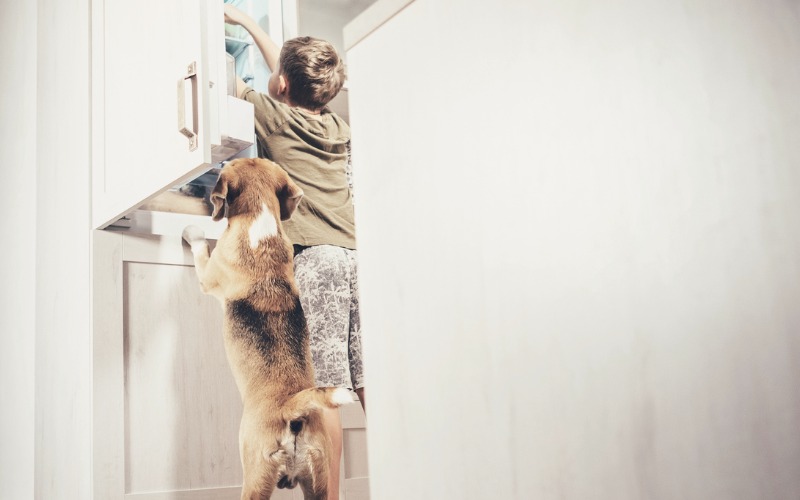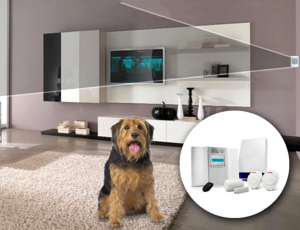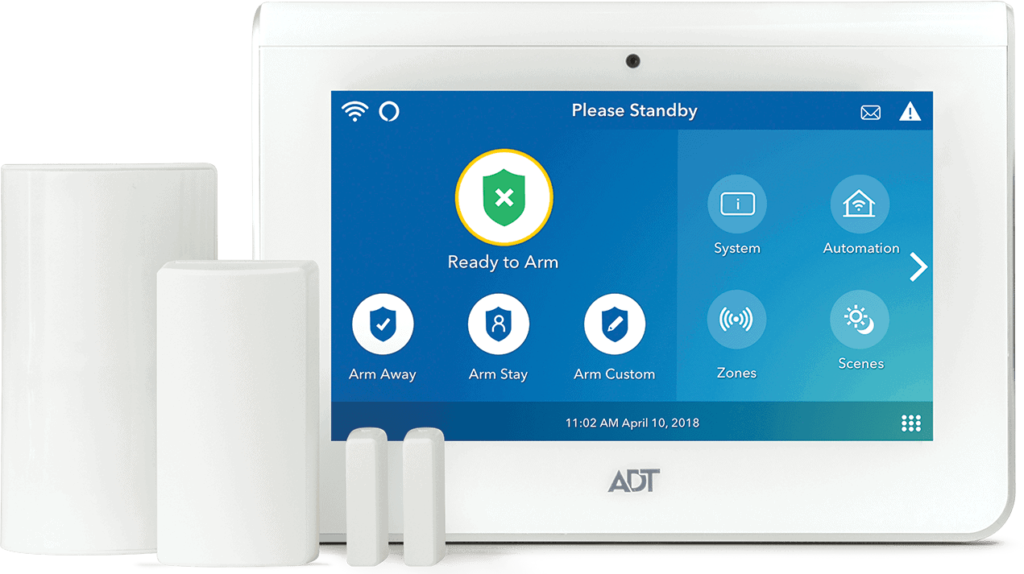In this article, you will discover practical tips and advice on how to make your home security system pet-friendly. Whether you have a mischievous cat who loves to explore or a protective dog who barks at every noise, it’s important to ensure that your furry friends are included in your home security plan. We will explore methods to prevent false alarms, ways to safeguard your pets from harm, and the best security features to consider when you have pets in the house. So, let’s dive in and learn how to create a secure and pet-friendly environment for your home.
Choosing the Right Security System
Ensuring the safety and security of both your home and your beloved pet is of utmost importance. When choosing a security system, it is essential to consider the specific needs of your pet. Factors such as size and breed play a crucial role in determining the most suitable security system for your home.
Consider the size and breed of your pet
First and foremost, take into account the size and breed of your pet. Larger dogs may have different requirements compared to smaller cats or birds. Consider whether your pet is likely to trigger false alarms by accidentally setting off the security system.
Look for motion sensors with pet immunity
One essential feature to look for in a pet-friendly security system is motion sensors with pet immunity. These sensors are designed to distinguish between the movements of your pet and potential intruders. They are programmed to ignore the presence of pets within a specific weight range, reducing the chances of false alarms.
Consider a security system with pet-friendly alerts
Another crucial aspect to consider is whether the security system offers pet-friendly alerts. Some systems come with specific alerts designed to inform you when your pet enters or leaves a certain area. This feature can provide peace of mind, especially if you have an adventurous pet that tends to explore outside zones you wish to keep them away from.
Placing Motion Sensors Strategically
To maximize the effectiveness of your security system while minimizing false alarms caused by your pet’s movements, it is essential to strategically place motion sensors throughout your home.
Avoid placing motion sensors near areas where your pet spends most of its time
When placing motion sensors, it is crucial to avoid positioning them in areas where your pet spends most of its time. For example, if your cat frequently naps on the living room couch or your dog loves lounging by the fireplace, avoid installing motion sensors in these spots. This will ensure that your pet’s usual activities do not trigger false alarms.
Angle the motion sensors properly to avoid false alarms
Properly angling the motion sensors is another important consideration. Make sure the sensors are directed away from areas where your pet’s movements are most likely to occur. By angling the sensors towards entry points and strategic areas, you can enhance the security coverage while minimizing the chances of false alarms.
Using Pet-Friendly Cameras
Incorporating pet-friendly cameras into your security system can provide you with an additional layer of monitoring and peace of mind.
Choose cameras with adjustable sensitivity settings
When selecting pet-friendly cameras, prioritize those with adjustable sensitivity settings. This feature allows you to customize the camera’s response to your pet’s movements. By fine-tuning the sensitivity, you can prevent unnecessary alerts caused by your pet’s activities while still capturing potential threats.
Look for cameras with two-way audio to interact with your pet remotely
Having cameras with two-way audio capabilities is a valuable feature for pet owners. This technology allows you to interact with your pet remotely, providing reassurance and comfort when you’re away from home. You can talk to your pet, offer words of encouragement, or even play recorded messages to soothe their anxiety.
Ensure the cameras have a wide field of view to monitor multiple areas
Opt for cameras with a wide field of view to ensure comprehensive coverage of your home. This feature enables you to monitor multiple areas simultaneously, reducing blind spots and increasing the overall effectiveness of your security system.
Utilizing Smart Access Control
Smart access control features can greatly enhance the pet-friendliness of your security system and provide added convenience for both you and your furry friend.
Consider a smart pet door with personalized access
Investing in a smart pet door with personalized access is an excellent idea for pet owners. These doors allow your pet to come and go as they please while keeping unauthorized animals or intruders out. Some smart pet doors can be controlled remotely, giving you the ability to lock or unlock them from your mobile device.
Use keyless entry systems to prevent pets from triggering alarms
Keyless entry systems are a practical solution to prevent your pet from inadvertently triggering alarms. With these systems, you can provide family members and authorized individuals with personalized access codes while keeping your pet from accidentally setting off the security system.
Implement smart locks with temporary access codes
Smart locks with temporary access codes are particularly useful if you have pet sitters, dog walkers, or other temporary visitors. By assigning them unique access codes that can be controlled remotely, you can ensure that your pet is cared for without compromising your home’s security.
Preventing False Alarms
False alarms can be a nuisance and a source of unnecessary stress for both you and your pet. Fortunately, there are several measures you can take to prevent false alarms caused by your furry companion.
Train your pet to avoid specific areas
Training your pet to avoid specific areas can greatly reduce the risk of triggering false alarms. Whether it’s teaching them not to venture near the security sensors or avoiding certain rooms, consistent training can help instill boundaries and keep your home security system functioning smoothly.
Use barriers or baby gates to restrict access to sensitive areas
Implementing barriers or baby gates is an effective way to restrict your pet’s access to sensitive areas of your home. By creating designated pet-free zones, you minimize the likelihood of your pet triggering alarms in these areas.
Consider pet-proofing certain alarm components
Take the necessary precautions to pet-proof certain alarm components, such as keypads or control panels. Ensure that these components are securely mounted and out of your pet’s reach to prevent accidental activation.
Incorporating Pet Tracking Devices
Combining pet tracking devices with your security system can provide an additional layer of protection for your furry friend.
Use pet-tracking devices to keep tabs on your pet
Pet-tracking devices are increasingly popular among pet owners, allowing you to monitor your pet’s location in real-time. By attaching a small device to your pet’s collar or harness, you can easily track their movements and ensure their safety.
Sync pet tracking with security systems for added protection
Syncing your pet-tracking device with your security system can provide added protection. Some security systems offer the capability to integrate pet-tracking data, allowing you to receive alerts if your pet leaves a predetermined safe zone. This feature ensures that you are notified promptly if your pet wanders off or is potentially in danger.
Creating Safe Pet Zones
Creating safe pet zones within your home is crucial for both your pet’s well-being and your peace of mind.
Designate specific areas where your pet can roam freely
To provide your pet with a sense of security and freedom, designate specific areas of your home where they can roam freely. These designated pet zones serve as their own safe haven, minimizing the chances of them triggering alarms or encountering potential hazards.
Install pet-friendly furniture or fixtures to create comfortable zones
Enhance your pet’s comfort within their designated areas by installing pet-friendly furniture or fixtures. Consider investing in cozy beds, scratching posts, or perches for cats, and provide ample toys or chewable items to keep them entertained. These additions not only create a comfortable environment for your pet but also encourage them to stay within their designated zones.
Training Your Pet for the Security System
Ensuring that your pet is comfortable and familiar with the security system is essential in preventing unnecessary stress and anxiety.
Introduce your pet to the security system gradually
Introduce your pet to the security system gradually to help them acclimate and feel at ease. Allow them to explore the various components and become familiar with the sounds and visual cues associated with the system. Patience and positive reinforcement can go a long way in helping your pet feel comfortable around the security system.
Associate the system with positive experiences for your pet
Create positive associations with the security system by pairing it with enjoyable experiences for your pet. Offer treats or engage in playtime near the system to help them associate it with positive and rewarding moments. This will help alleviate any potential fears or apprehension.
Reward your pet for good behavior around the security system
Rewarding your pet for exhibiting good behavior around the security system is an effective training technique. Praise them when they remain calm and avoid triggering false alarms. Positive reinforcement will reinforce their understanding of appropriate behavior, making the security system a harmonious and stress-free part of their lives.
Monitoring Your Pet Remotely
Being able to monitor your pet remotely provides peace of mind and allows you to check on their well-being while you’re away from home.
Choose a security system with remote monitoring capabilities
When selecting a security system, prioritize those with remote monitoring capabilities. These systems enable you to keep an eye on your pet via mobile apps or platforms, giving you real-time access to video feeds and notifications.
Use mobile apps or platforms to monitor your pet while away
With the advancement of technology, many security systems now offer mobile apps or dedicated platforms that allow you to monitor your pet while you’re away. Through these interfaces, you can view live video footage, adjust camera settings, and stay connected to your pet no matter where you are.
Set up notifications for specific pet-related events
Customize your security system’s notifications to receive alerts for specific pet-related events. Whether it’s when your pet enters an off-limits area or if their activity seems abnormal, these notifications will ensure that you’re always aware of your pet’s whereabouts and well-being.
Assessing Possible Hazards and Solutions
As a responsible pet owner, it is crucial to identify potential hazards within your home and take appropriate measures to mitigate them.
Identify potential hazards that could harm your pet
Thoroughly assess your home to identify potential hazards that could pose a danger to your pet. This includes identifying exposed wires, toxic plants, chemicals, or any other household items that may be harmful if ingested or interacted with.
Implement solutions to mitigate such hazards
Once potential hazards have been identified, implement solutions to eliminate or mitigate the risks. Secure loose wires, remove or relocate toxic plants, store chemicals in secure cabinets, and ensure that all potentially dangerous items are safely out of your pet’s reach.
Regularly review and update your pet’s safety measures
Pet safety measures should be regularly reviewed and updated to keep up with your pet’s changing behaviors and needs. Conduct periodic assessments to ensure your home remains safe for your furry companion, adjusting security systems, pet zones, and training techniques as necessary.
In conclusion, creating a pet-friendly home security system involves careful consideration of your pet’s needs and habits. By choosing the right security system, strategically placing motion sensors, utilizing pet-friendly cameras, incorporating smart access control, preventing false alarms, utilizing pet tracking devices, creating safe pet zones, training your pet, monitoring them remotely, and assessing potential hazards, you can ensure the safety and well-being of your pet while maintaining the security of your home. Remember, a pet-friendly security system not only provides peace of mind but also strengthens the bond between you and your furry companion.






